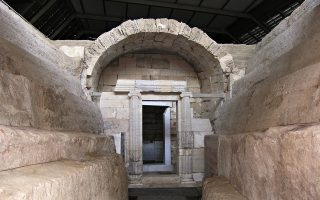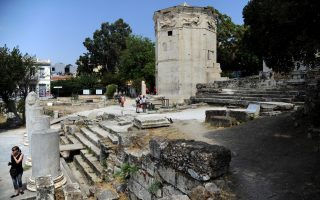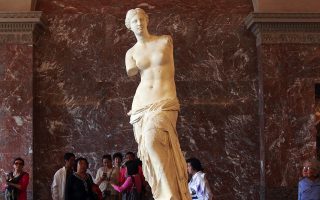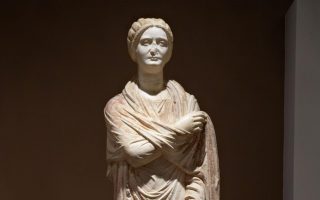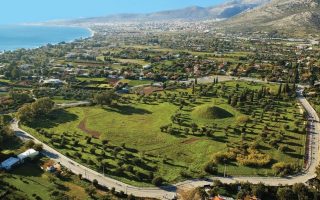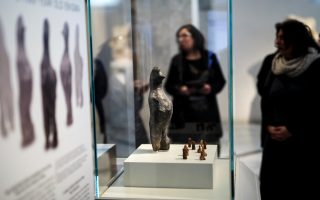An ancient wonder of engineering on Samos
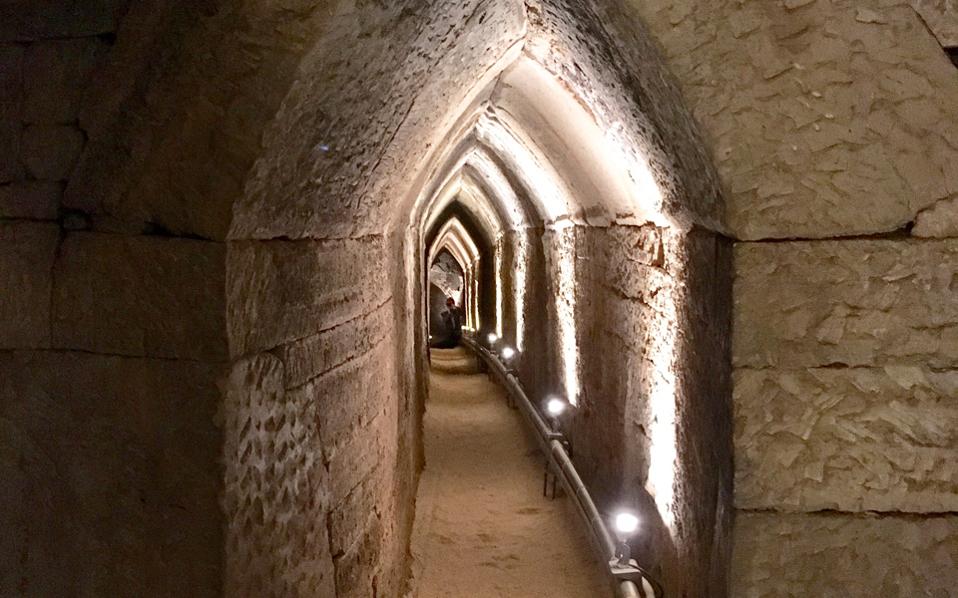
My shoes were covered in mud. Water from the roof dripped down onto my jacket. I was walking along a 9-meter-high tunnel. My head – thankfully, I wore a helmet – bumped against the rocks several times. But I didn't mind: Visiting the Eupalinian Aqueduct is a unique experience.
The middle section of the aqueduct was designed in the mid-6th century BC by the great architect and engineer Eupalinos of Megara for the ancient city-state of Samos, site of the modern-day town of Pythagorio. It was commissioned by the tyrant Polycrates, the ruler of Samos from 538 to 522 BCE, and it can still be appreciated today as one of the most admired engineering achievements of antiquity.
This month, once approved by the Central Archaeological Council (KAS), it will be reopened to visitors following a complex and demanding three-year restoration, maintenance and promotion project that cost 3.1 million euros. Thanks to its completion, visitors will soon be able to walk through the 1,036-meter tunnel for the first time.
The “new” Eupalinian Aqueduct was presented to the media by Culture Minister Lydia Koniordou and those involved in the project. “Enter the tunnel, feel the energy of the mountain, listen to what it has to say,” Koniordou urged reporters while describing the monument as a “gem” for the island that will act as a tourist attraction.
“The Eupalinian Aqueduct is not only an impressive technological achievement; it reveals layers of thought and reflection, and that is the uniqueness of the experience it offers,” said Samos MP Dimitris Sevastakis. For his part, Demosthenes Svolopoulos, head of the Directorate of Restoration of Ancient Monuments at the Ministry of Culture, said the project “is worthy of the monument’s radiance and of ancient Samos.”
Indeed, Samos in the mid-6th century BC had earned a reputation for its material and spiritual achievements. Trade and shipping ensured wealth, sparking a cultural blossoming. But there was one basic necessity missing: water. That’s why Polycrates commissioned Eupalinos to bring water into the settlement from the rich Agiades spring on Mount Ambelos.
The project was almost impossible as the mountain lies between the spring and the city. But ingeniously, Eupalinos, using simple measuring instruments and complex mathematical calculations, decided to simultaneously bore through both sides of the mountain, creating a 1,036-meter-long tunnel measuring 1.80×1.80 meters.
The achievement made a great impression on the ancients, not least the well-traveled historian Herodotus. The two crews, using hammers and chisels, carved through the tough limestone and met in the middle of the tunnel with negligible deviation. It was a costly state project as it took 8-10 years to complete the excavation of 12,500 tons of rock and the installment of 5,000 clay pipes. But water started to flow plentifully into the city's fountains.
The aqueduct continued to operate for about 1,100 years. During Byzantine times, the tunnel served as a refuge for the inhabitants during raids. It was later abandoned. It was excavated by the German Archaeological Institute in the 1970s.
From then until its closure three years ago, only 130 meters had been open to the public for safety reasons. But recent work shored up the tunnel, ensuring its stability, the stone linings were maintained, sheltered walkways were constructed, a lighting system was installed, and the surrounding areas were spruced up. Much still needs to be done.
The ministry has referred to “a holistic strategy” to showcase and promote the Eupalinian Aqueduct. It remains to be seen if it’s actually implemented in practice. The only sure thing is that Samos needs and deserves support.
